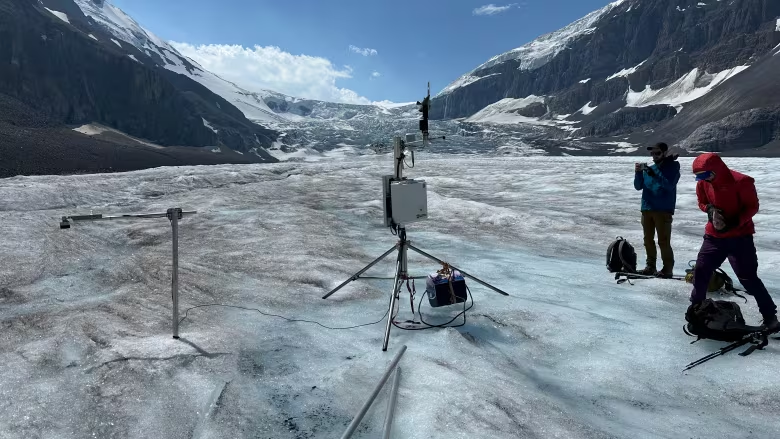The devastating wildfires ravaging Jasper National Park are significantly impacting Alberta’s glaciers, particularly the Athabasca Glacier, according to recent research. John Pomeroy, a hydrologist from the University of Saskatchewan, has observed that ash and soot from the fires are darkening the glacier’s surface, causing it to absorb more solar heat and accelerate its melt.
Pomeroy’s team noted that the Athabasca Glacier had already experienced a dramatic three-meter reduction in thickness since last September, and recent measurements show nearly nine meters of ice loss in the past year alone. This rapid melting is partly due to the glacier’s darkened surface, which absorbs more heat compared to its usual white, reflective state.
The increased melting threatens not only the glacier but also the rivers dependent on its meltwater. The Athabasca River, which flows over 1,000 kilometers through Alberta and Saskatchewan, has already seen unusually high flows, indicating accelerated glacier melt. This could impact water supplies and hydroelectric power generation in the region.
Pomeroy’s research, spanning from 2015 to 2020, highlights that wildfire soot has led to a 10% increase in glacier melt. The darkening effect is compounded by algae blooms that thrive on the soot, further reducing the glacier’s reflectivity and accelerating its demise.
Glacier scientist Ben Pelto from North Vancouver underscores the broader implications of these findings. He notes that the shrinking snow cover due to higher temperatures means glaciers are losing their ability to reflect heat, leading to even faster melting.
The situation underscores the urgent need for climate action to address the increasing frequency of wildfires and their impact on critical natural resources. As researchers continue to study these changes, the pressing question remains: how can we mitigate the effects of climate change to preserve these vital glacial systems?

